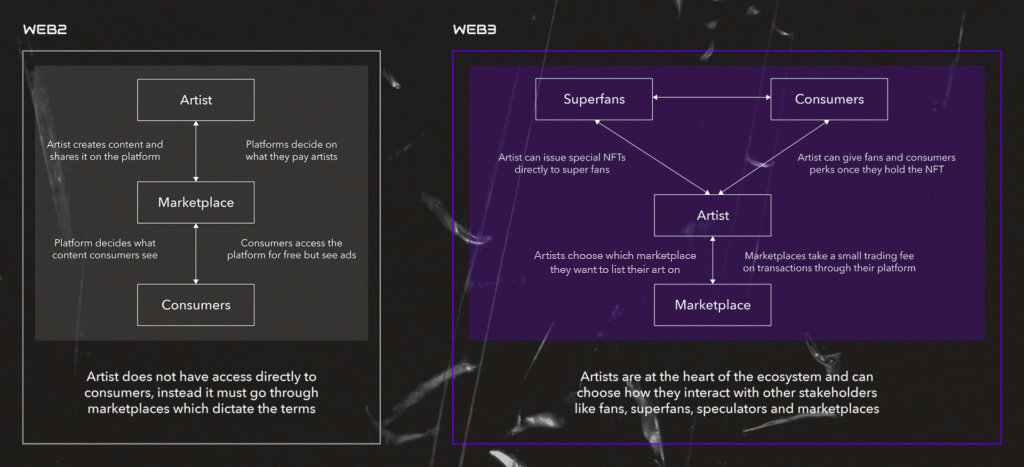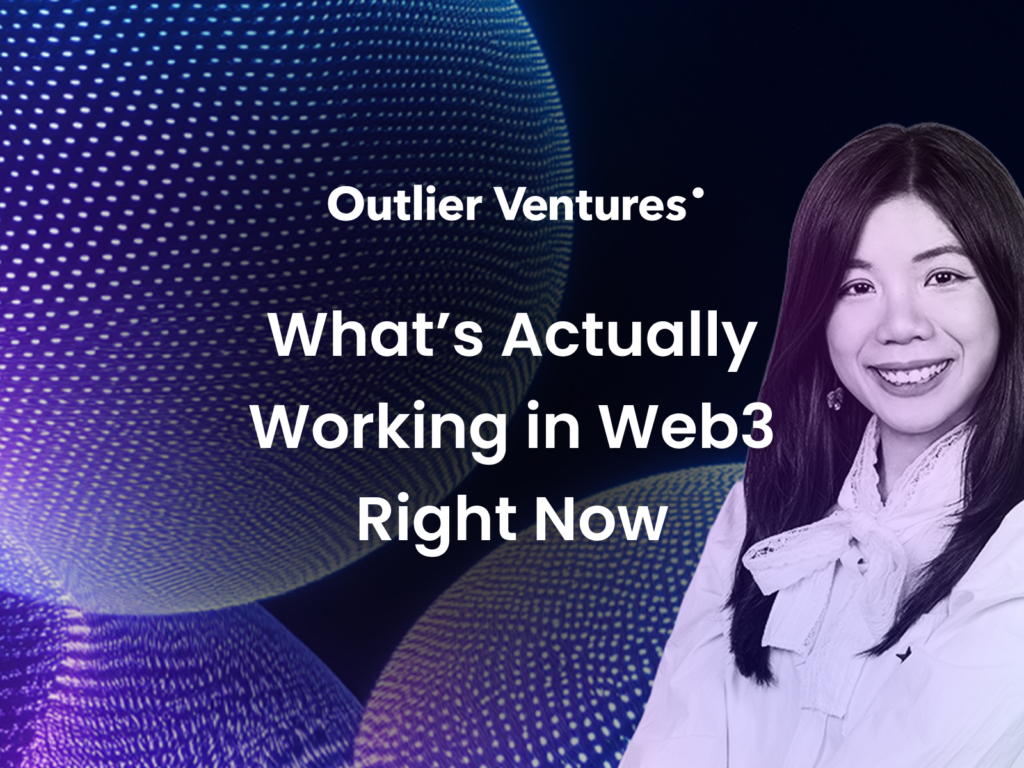Creativity is the main trait that differentiates us from other animals. In this sense, we might say that culture is our most human-trait, and those who dedicate their careers to creating culture should be able to sustain themselves doing so.
Unfortunately, today’s economic machine is set up in such a way that the majority of the value being created by creators is captured by intermediaries, such that only a small percentage of would-be artists are able to make it a full time career. In 2021, the average earning per artist on Spotify was $636, with the median most likely being a lot lower.
In this article, we’ll explore how NFTs could change this paradigm and enable more of us to make a living doing what makes us truly human, creating art, without having to cater our art to appeal to mass market
Part 1: Art is Niche
Picture this: you’ve put in years of work perfecting your craft, you’ve found a small crowd of people who really love what you do and support you through your Patreon page and, after platform fees, you make $1000 per month. The reason? Your art is niche.
It’s hard to find the people that are into what you produce. Without a large marketing budget, or content that’s so mainstream that it’s basically stripped of all artistic creativity, you won’t be able to reach your audience through Web2 platforms which have been optimized for clicks.
With NFTs, your early fans become owners and are invested in seeing you succeed. With this added incentive, they become evangelists and share your work with others you would have not reached otherwise. For example, 21-year-old digital artist Anthony Azekwoh from Lagos made $40,000 from his NFT art series, The Deathless Collection, in 2021 with the NFT for The Red Man selling for $25,419.
Part 2: Intermediaries take huge cuts
Today’s distribution channels for content, from Web2 social media giants to record labels and art dealers have one thing in common: they take a huge cut of the value being created by artists. This is due to the fact that they own the content you create and the network within which it’s distributed.
With NFTs, you own the art, which shifts the power back into the hands of the artists. If a platform tries to take huge fees for the sale of NFTs, artists can simply take work off the platform art and sell it through another venue that has a more competitive fee structure. Youtube takes a 45% cut of all advertising revenue, compared to OpenSea which takes a 2.5% transaction fee.
Part 3: Ad-based Revenue models are misaligned with artists’ interests
Web 2.0 evolved around ad-based revenue models out of necessity. It was the only way to generate income out of free users. Aside from plaguing the internet with banner ads, this revenue model is inherently misaligned with content creators’ interests: it requires scale to function and is an indirect way of monetizing art.
The scale required by an ad-based revenue model means that artists are unable to monetize effectively until they’ve reached a certain level of popularity. This has two downsides; you cannot live off your art until you breakthrough and you are forced to appeal to the masses.
NFTs enable a direct-to-consumer revenue model. By selling an NFT directly to fans, artists can have tiered revenue models, where superfans can be charged more for tailored or rare content. The NFT world is not without its own barriers to entry however. Ethereum gas prices, the fee needed to mint an NFT, can price out a lot of would-be artists. However, platforms like Fayre aim to reduce these costs by allowing artists to mint their NFTs for very low fees. In addition, niche artists can earn continuous income by baking in a royalty on resale into their NFTs, which means that artists are rewarded for having an active community rather than a large one.

Conclusion
NFTs benefit artists at all stages of their careers. Early on, NFTs can be a way to fund a creator’s first projects by tapping into their early fans, who are then incentivized to spread the word about the artist. As NFT artists gain notoriety, they retain the ownership of their creations, allowing them to decide through what intermediaries they want to sell their art. Even once a creator sells an NFT, they can still earn passive income from royalties.
NFTs are not without their drawbacks, as any nascent technology, it still lacks widespread adoption. Understanding how to purchase, hold and trade NFTs can be complicated for the average fan and some communities even perceive NFTs negatively. Finally, regulatory uncertainty on whether an NFT is simply art or a security can hold many when it comes to how NFTs are treated . These drawbacks do not mean NFTs are bound to fail, rather that this industry is ripe for innovation.
Outlier Ventures has been backing Web 3 founders since 2014 and is the world’s leading Open Metaverse accelerator program, and was one of the first VC firms dedicated to investing in the emerging crypto ecosystem. Their portfolio includes notable projects across DeFi, NFTs and blockchain infrastructure with a focus on emergent Open Metaverse use cases such as NFT-based play-to-earn games, augmented reality and more. Outlier Ventures portfolio can be found.
If you are tackling any of these challenges, building or innovating in the NFT space, we want to support you. Apply to the Outlier Ventures Base Camp here.




